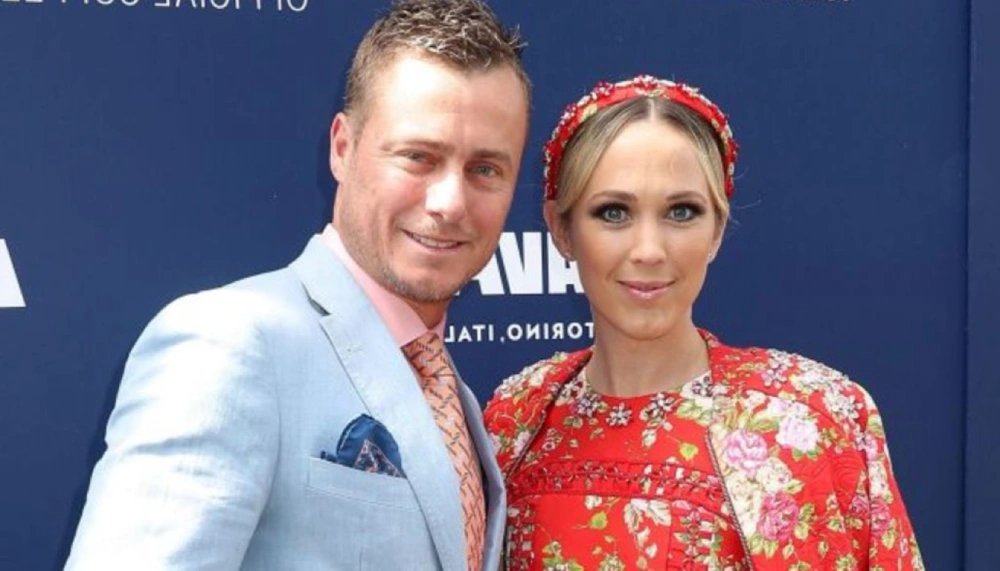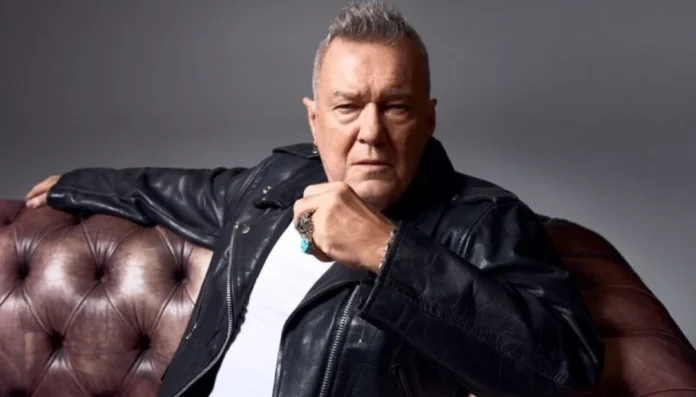Tennis legend Lleyton Hewitt transformed his aggressive baseline game and fighting spirit into a $25 million fortune. The Australian star earned nearly $21 million in prize money during his 18-year career, but his wealth extends far beyond court winnings. From strategic real estate investments to broadcasting deals, Hewitt’s financial portfolio mirrors the tactical brilliance he showed as the world’s youngest-ever No. 1 ranked player. This breakdown reveals how the two-time Grand Slam champion built and maintains his wealth in 2025.
Lleyton Hewitt Net Worth
Lleyton Hewitt’s net worth stands at approximately $25 million in 2025. This figure comes from combining his career prize money, endorsement deals, real estate investments, and his ongoing income as a coach and commentator.
Why do some sources list his wealth between $15-25 million? The discrepancy stems from different calculation methods. Some estimates only count liquid assets, while others include property values. Some track only his tennis earnings, missing his broadcasting deals and coaching income.
His fortune might seem modest compared to today’s tennis stars who earn $50+ million yearly, but Hewitt competed when prize money was substantially lower. His smart property investments and career longevity have built his wealth steadily over decades.
Early Career
Hewitt turned professional in 1998 at just 16 years old. His career prize money totals $20.9 million across 18 years of professional play.
His earnings accelerated dramatically after winning the 2001 US Open and 2002 Wimbledon championships. These victories, along with reaching world No. 1 ranking, boosted both his prize money and endorsement appeal.
His peak earning years came between 2001-2005 when he claimed over half his career prize money. During this period, Hewitt earned between $2-4 million annually from tournament play alone.
The prize breakdown from his biggest career wins includes:
- US Open 2001: $850,000
- Wimbledon 2002: $755,000
- ATP Year-End Championships: $1.52 million (combined 2001 and 2002 victories)
While impressive, these figures represent pre-tax earnings. After accounting for taxes, travel expenses, coaching fees, and living costs, players typically keep 40-60% of their prize money, meaning Hewitt’s actual tennis earnings likely translated to $8-12 million after expenses.
Endorsements & Off-Court Income
Endorsements dramatically multiplied Hewitt’s tennis earnings. His signature deals came from Yonex (racquets) and Nike (clothing), which reportedly paid him $4 million annually during his prime years.
Unlike some players who struggled to attract sponsors, Hewitt’s fiery on-court personality and status as world No. 1 made him marketable globally. His “Come on!” battle cry and distinctive backward cap became iconic marketing elements.
Other notable endorsement partnerships included:
- Rolex watches
- Optus (Australian telecommunications)
- Coca-Cola’s Mount Franklin water brand
- New Balance (later in his career)
Since retiring from full-time play, Hewitt has built steady income streams through:
- Davis Cup captaincy for Australia
- Tennis commentary for Channel 9 and ESPN
- Coaching consultancy work
- Exhibition matches and legends events
His commentary work for major tournaments like the Australian Open provides consistent yearly income while requiring just a few weeks of work annually.
Real Estate & Asset Investments
Property forms a substantial portion of Hewitt’s wealth. His real estate portfolio has changed significantly over the years, with smart buying and selling decisions.
His most notable property transactions include:
Toorak Mansion (Melbourne): Purchased for $8.3 million in 2004, sold for $15 million in 2021. This luxury property in Melbourne’s most prestigious suburb nearly doubled his investment over 17 years.
West Lakes Home (Adelaide): His family home sold for $2.5 million after he relocated to the Bahamas.
Bahamas Estate: Purchased after retirement, this property serves both as a family home and a potential tax advantage. The exact purchase price remains private, but similar properties in the area sell for $3-7 million.
Glenhaven Property (Sydney): Acquired in 2023 for an estimated $4.5 million, this serves as the family’s Australian base.
Unlike many athletes who overspend on luxury items, Hewitt has maintained a relatively conservative investment approach, focusing on real estate appreciation rather than depreciating assets like exotic cars or jewelry.
His property strategy mirrors his playing style—patient, strategic, and focused on long-term results rather than flashy short-term gains.
Lleyton Hewitt Age & Personal Life

Born February 24, 1981, Lleyton Hewitt is 44 years old in 2025. His personal life has remained remarkably stable for a sports celebrity.
In 2005, he married Australian actress Bec Cartwright after a whirlwind romance. Their wedding generated significant media attention in Australia, with magazine rights reportedly selling for over $1 million—money that added to their combined wealth.
The couple has three children:
- Mia (born 2005)
- Cruz (born 2008), who shows promise as a tennis player
- Ava (born 2010)
Family has always been central to Hewitt’s life. He often traveled with his wife and children even during his playing days. This family-first approach likely prevented some of the financial mistakes common among young athletes who get caught up in lavish lifestyles.
His son Cruz is following in his footsteps, showing talent on the junior circuit. If Cruz succeeds professionally, coaching his son could become another income stream for Hewitt.
Career Highlights & Rankings
Hewitt’s career achievements directly impacted his earning potential and current net worth. His most significant professional milestones include:
Grand Slam Victories:
- US Open (2001)
- Wimbledon (2002)
ATP Rankings:
- Youngest world No. 1 in history (age 20)
- 80 weeks spent at world No. 1
- Year-end No. 1 in 2001 and 2002
Tournament Wins:
- 30 ATP singles titles
- 2 ATP Tour Finals championships (2001, 2002)
Davis Cup:
- Helped Australia win in 1999 and 2003
- Currently serves as team captain
Career Longevity:
- 18 years as a professional (1998-2016)
- Final match at 2016 Australian Open
These achievements built his reputation and marketability. Being ranked No. 1 significantly increased his appearance fees at tournaments and exhibition matches—sometimes earning $100,000+ just for participating.
His Davis Cup captaincy role allows him to remain connected to professional tennis while earning a consistent salary from Tennis Australia.
Lifestyle & Current Engagements
Hewitt maintains a relatively modest lifestyle compared to his wealth. He splits time between his Bahamas residence and Australian properties, allowing his children educational opportunities in both locations.
His current professional activities include:
Tennis Commentary: Regular appearances on Channel 9’s coverage of the Australian Open and other major tournaments provide substantial income for limited work periods.
Davis Cup Captaincy: This role with Tennis Australia involves coaching, strategy, and player development.
Coaching Consultancy: He works with promising Australian players, sharing technical expertise and mental approach.
International Tennis Hall of Fame: Inducted in 2021, this cements his legacy and creates speaking and appearance opportunities.
Unlike many retired athletes who struggle with the transition to civilian life, Hewitt has maintained connections to tennis while expanding his business interests. This balanced approach has helped preserve and grow his wealth post-retirement.
Net Worth Compared to Earnings & Peers
Hewitt’s $25 million net worth represents a successful conversion of his $20.9 million prize money into lasting wealth. Many athletes spend their earnings quickly, but Hewitt has grown his initial earnings through investments.
Compared to his contemporaries:
Roger Federer: Estimated $550 million (20+ times Hewitt’s worth) Andre Agassi: Approximately $175 million Andy Roddick: Around $30 million Marat Safin: Estimated $15 million
Hewitt ranks in the middle tier of tennis millionaires from his era. While not reaching the commercial heights of Federer or Agassi, he’s done better financially than many equally talented players.
The comparison shows how factors beyond court success influence a player’s long-term wealth:
- Endorsement appeal
- Investment choices
- Spending habits
- Post-career income streams
Today’s tennis stars earn significantly more than Hewitt’s generation. The 2023 US Open men’s champion earned $3 million for a single tournament—more than Hewitt might have earned across multiple tournaments in his prime years.
How We Calculated His Net Worth
Arriving at Hewitt’s $25 million figure involves combining several financial components:
Career Prize Money: $20.9 million (verified ATP data)
Endorsement Income: Estimated $30-40 million lifetime earnings from all sponsorship deals (based on reported contracts and industry standards)
Property Assets: Current value of real estate holdings (approximately $10-12 million)
Ongoing Income Streams: Commentary, coaching, and appearances (estimated $500,000-$1 million annually)
From this total, we subtract:
- Tax obligations (varying by country and year)
- Management fees (typically 10-15% of earnings)
- Living expenses over 25+ years
- Any failed investments or financial setbacks
The resulting figure represents his current estimated net worth. This method produces more accurate results than simply tallying career earnings, which fails to account for taxes, expenses, and investment returns.
Tennis Player
Lleyton Hewitt stands as one of Australia’s greatest tennis champions. His aggressive baseline game and mental toughness defined an era transitioning from serve-and-volley to baseline power tennis.
Born in Adelaide, Hewitt showed early promise, turning professional at 16. By 20, he had claimed the US Open title and reached world No. 1—the youngest player ever to top the rankings.
His playing style featured exceptional return of serve, court coverage, and fighting spirit rather than overwhelming power. This approach helped him succeed against physically larger opponents and contributed to his longevity in the sport.
Hewitt represented Australia in the Davis Cup with distinction, both as a player and now as team captain. His passionate nationalism and competitive fire made him a fan favorite despite occasional controversies over his on-court intensity.
Since retiring from singles in 2016, Hewitt has occasionally played doubles in select tournaments while focusing on coaching and commentary. His tennis knowledge and straightforward communication style have made him valued as both Davis Cup captain and broadcaster.
His financial success reflects a career built on discipline, strategic thinking, and careful planning—the same qualities that made him a champion on court.
Final Thoughts
Lleyton Hewitt’s $25 million net worth in 2025 tells a story of athletic excellence translated into financial security. While not among the wealthiest tennis players ever, his ability to grow his wealth beyond his playing days shows business acumen matching his tennis intelligence.
His financial journey offers lessons about the importance of investment diversity, career longevity, and post-retirement planning. By balancing property investments with ongoing work in tennis, Hewitt has created sustainable wealth that should last throughout his lifetime.
For a player who made his name through determination rather than natural physical gifts, his financial success follows the same pattern—maximizing available opportunities through smart decision-making and consistent effort.



